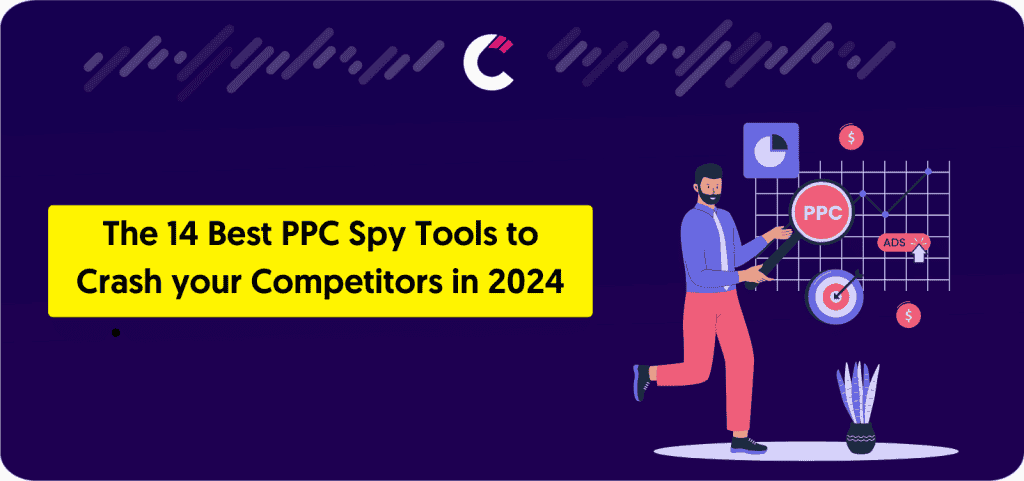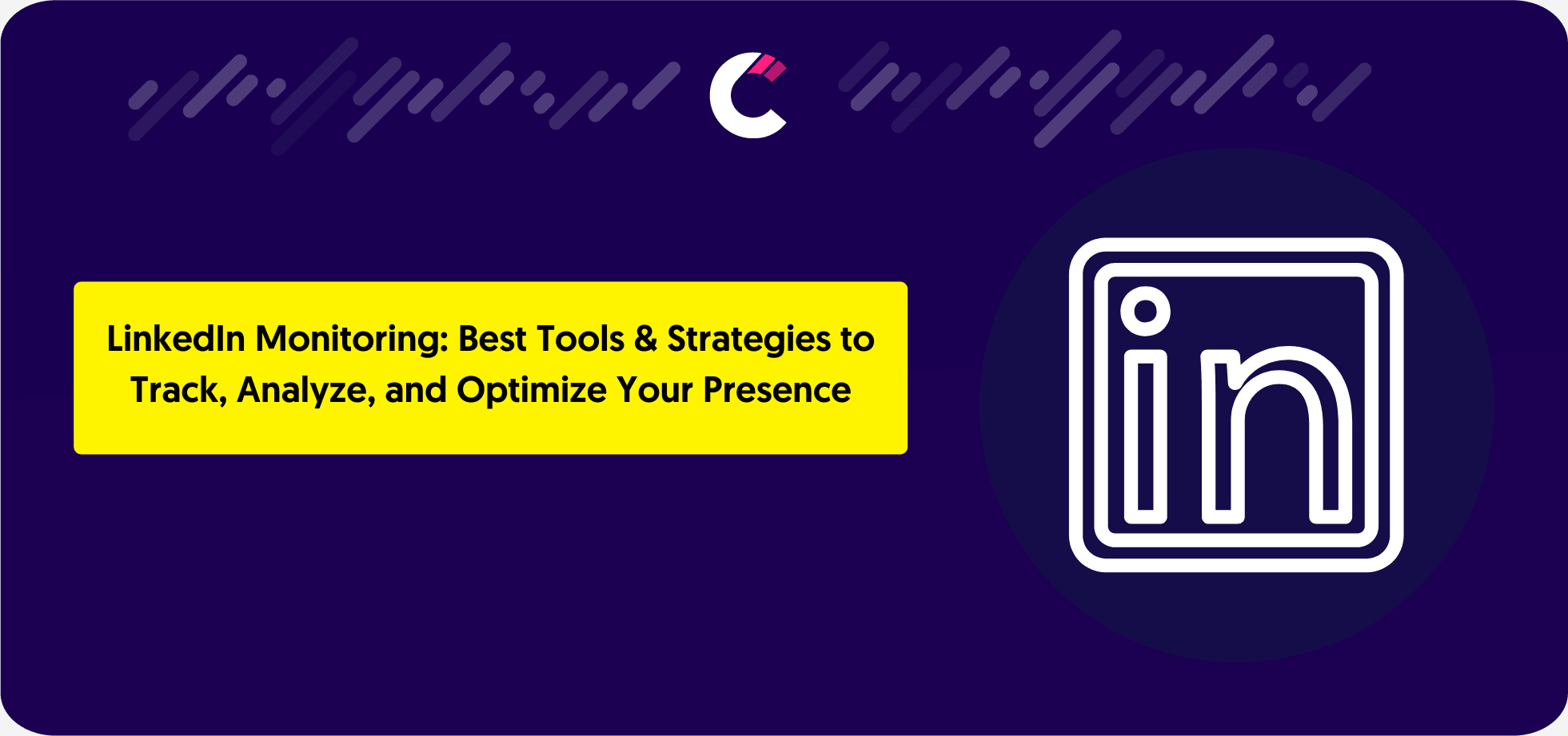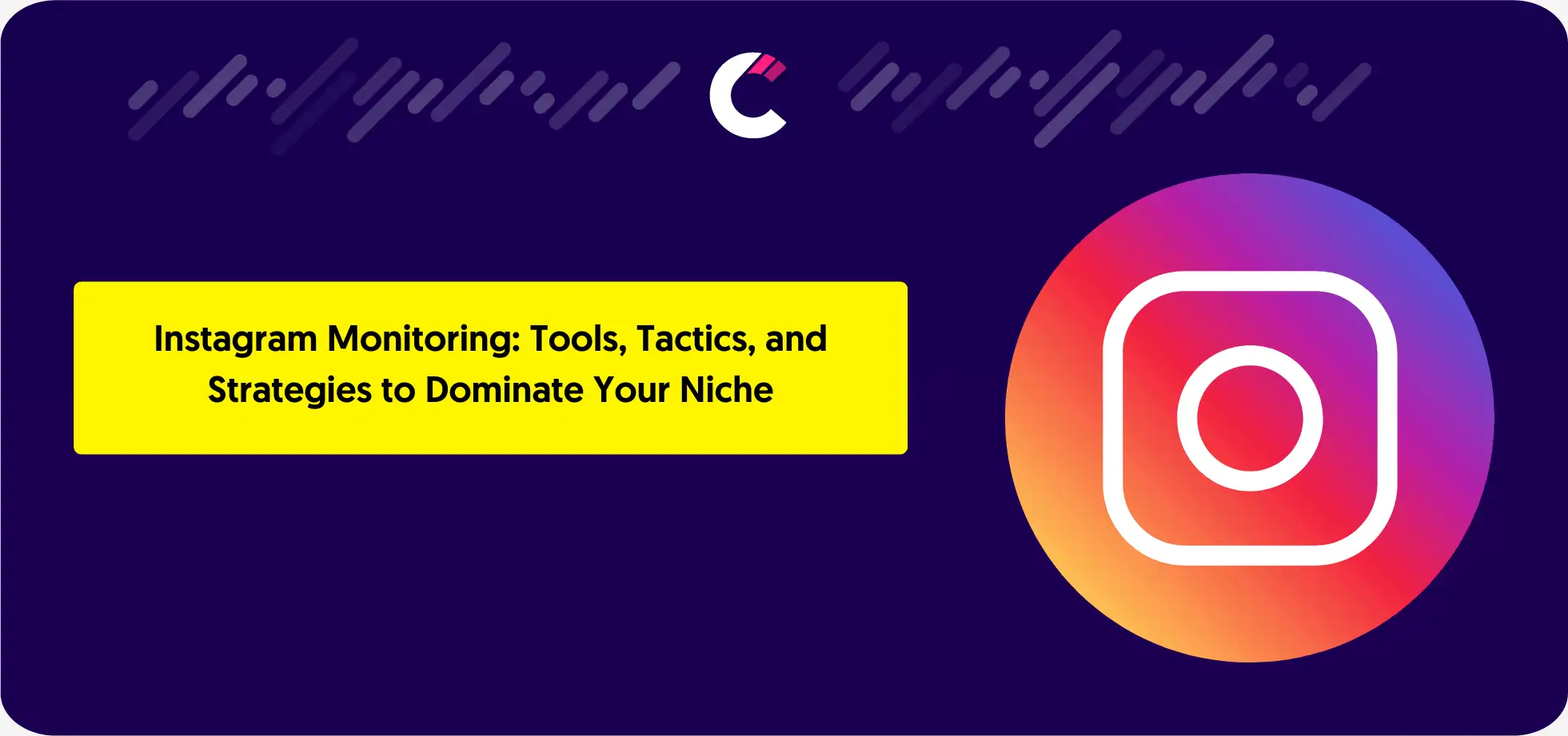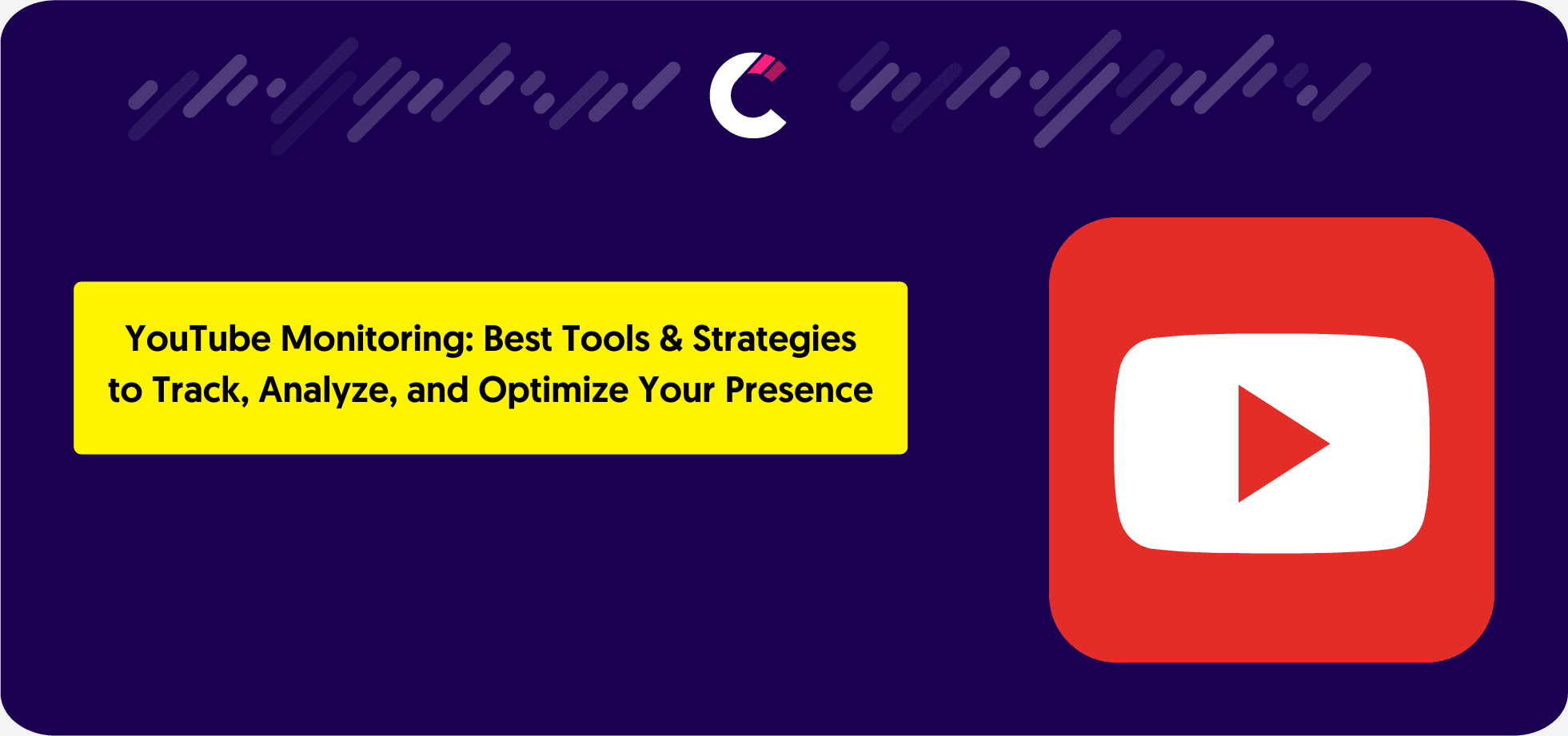A few years ago, I launched a PPC campaign for a new product, thinking we had everything dialed in. My ad copy was sharp, the visuals looked premium, and we were targeting what we thought were the best keywords. But after weeks of running ads, the results were a disaster.
- Our CPC was sky-high.
- Conversions were barely trickling in.
- A competitor was scooping up all the traffic.
At first, I assumed they were just outspending us. But after digging into their PPC strategy, I saw the real reason:
- They weren’t bidding on broad, competitive keywords like we were. They focused on high-intent, long-tail keywords we ignored.
- Their ad creatives weren’t just polished—they were constantly being A/B tested for better CTRs.
- Their landing pages weren’t flashy—they were designed to convert with clear CTAs, social proof, and pain-point-driven messaging.
We were guessing. They were optimizing.
That’s when I started using PPC spy tools. Within weeks, we had reworked our targeting, adjusted our creatives, and optimized our landing pages based on competitor insights.
The result?
- Lower CPC.
- Higher conversions.
- Customers who had previously gone straight to our competitor were now choosing us.
That’s when I realized: PPC spying isn’t about copying. It’s about outsmarting.
What is PPC Spying?
PPC spying isn’t just about watching your competitors—it’s about understanding their strategy so you can make smarter, data-driven decisions.
Instead of guessing which keywords, ad copy, and creatives work best, you can see real data on:
- Which keywords are driving traffic to their ads.
- What kind of ad copy and creatives they’re using.
- How their landing pages are structured for conversions.
- What platforms they’re spending the most on.
Armed with this knowledge, you can refine your campaigns, lower your CPC, and boost conversions—without burning thousands in trial and error.
What Are PPC Spy Tools?
The best advertisers don’t guess—they analyze, adapt, and outperform.
PPC spy tools uncover the strategies behind your competitors’ paid ads so you can see exactly what’s working for them. These tools track keywords, ad creatives, budgets, and performance metrics, helping you fine-tune your campaigns instead of wasting money on trial and error.
If you’re not using PPC spy tools, you’re already behind.
How PPC Spying Tools Work
Keyword Analysis
Not all keywords are worth bidding on. Some drain ad budgets fast, while others drive consistent, high-intent traffic.
PPC spy tools expose exactly which keywords your competitors are paying for—along with their search volume, CPC, and conversion potential.
💡 How to use this data:
- Identify top-performing keywords competitors rely on
- Find gaps they’re missing and own those terms
- Track seasonal trends and adjust bids before competitors do
Instead of wasting ad spend figuring it out the hard way, you start with a list of proven, high-ROI keywords from Day 1.
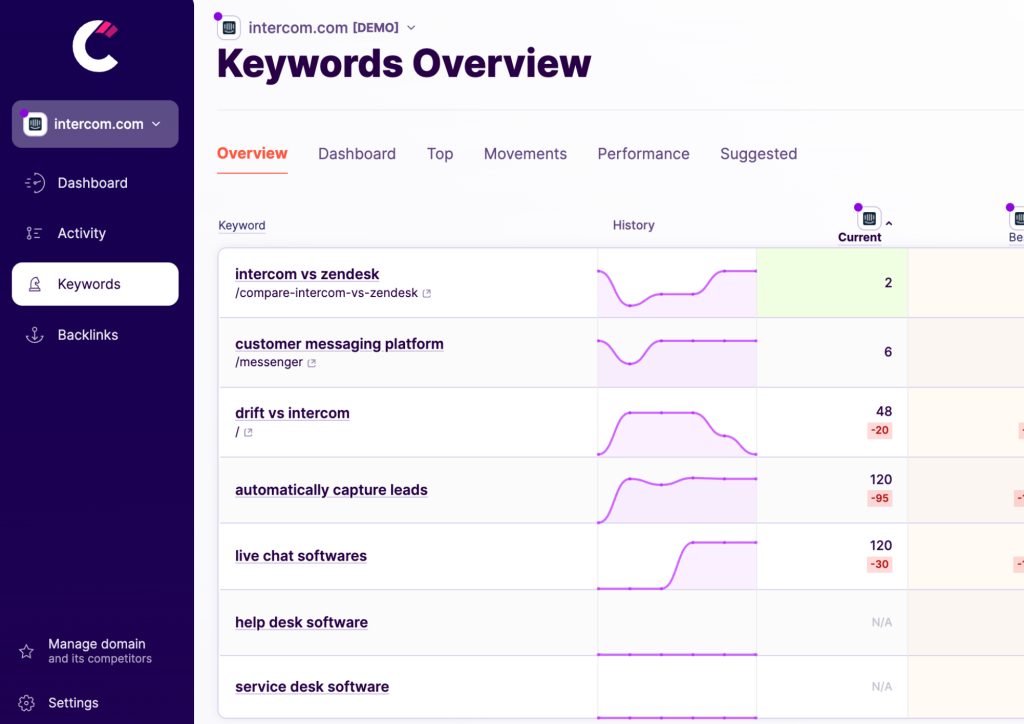
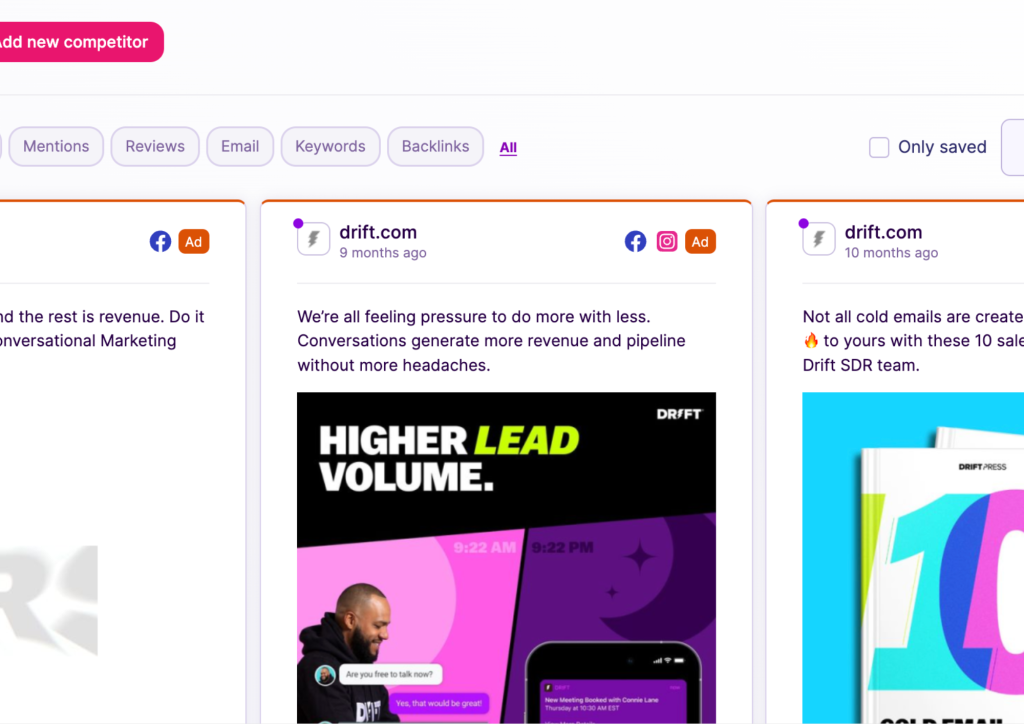
Ad Copy Examination
Most businesses test dozens of ad variations before finding what converts.
With PPC spying, you skip the trial and error and see the winning ads instantly.
💡 What to look for:
- Headlines & CTAs competitors use to drive clicks
- Emotional triggers that get attention
- Which offers (discounts, guarantees, urgency) work best
This isn’t about copying—it’s about understanding what makes your audience take action and crafting ads that outperform your competitors.
Landing Page Insights
A killer ad gets the click. A killer landing page makes the sale.
PPC spy tools let you see inside your competitors’ best-performing landing pages.
💡 What to analyze:
- Page layout & design (Do they use video? Testimonials?)
- Messaging & pain points they highlight
- Conversion tactics (pop-ups, lead magnets, pricing strategies)
If a competitor’s page is converting better than yours, it’s time to reverse-engineer why—and optimize your landing pages to beat them at their own game.

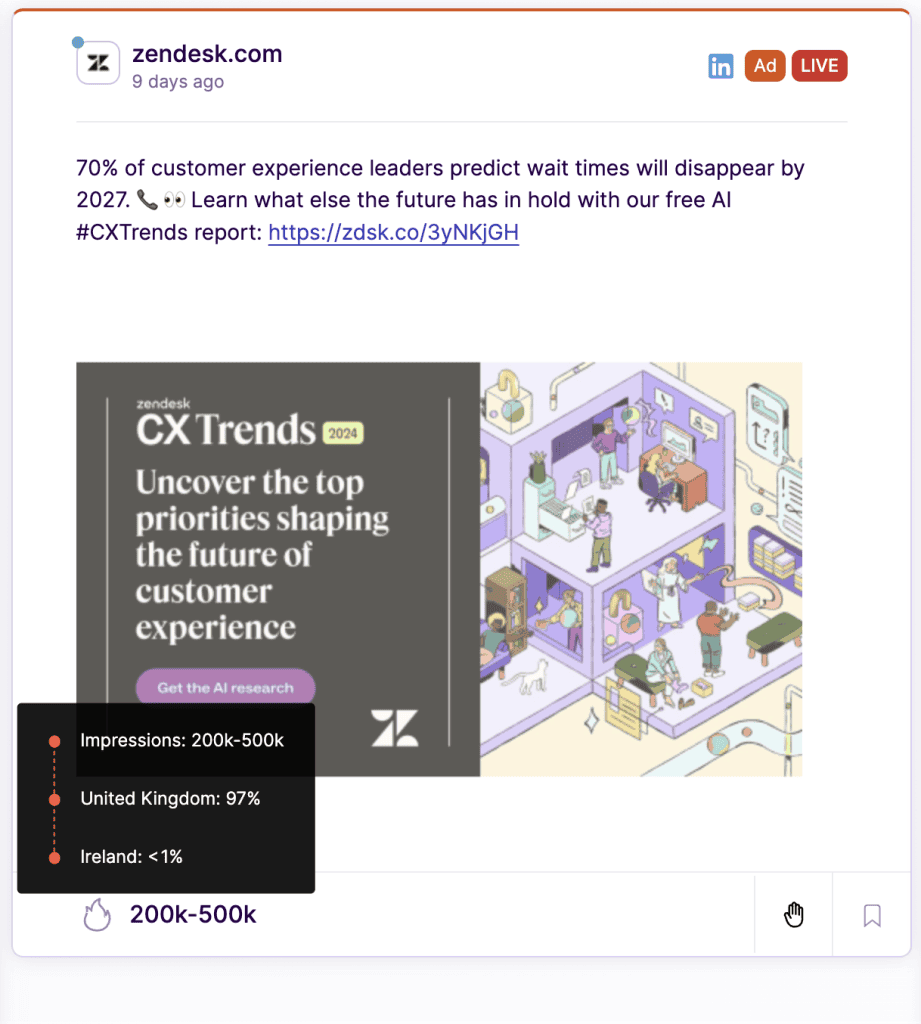
Ad Performance Metrics
Throwing money at ads without tracking performance is a guaranteed way to lose.
With PPC spying, you can compare your metrics to competitors and set realistic performance goals.
💡 Key insights to track:
- Click-through rates (CTR): Are competitors getting better engagement?
- Conversion rates: What’s their cost per acquisition?
- Ad frequency & placement: Where are they running the most successful ads?
If your CTR is low, maybe your messaging isn’t strong enough. If their CPC is lower, they might be bidding smarter. The more you know, the more strategically you can adjust your approach.
Budget Allocation and Spend
Some competitors dominate PPC simply because they outspend everyone. Others win by allocating budgets strategically.
💡 How to use this data:
- See who’s bidding aggressively on key terms
- Spot underutilized ad placements competitors ignore
- Adjust your budget to compete where it matters most
This insight prevents you from wasting money in bidding wars you can’t win while helping you double down on areas where you CAN win.

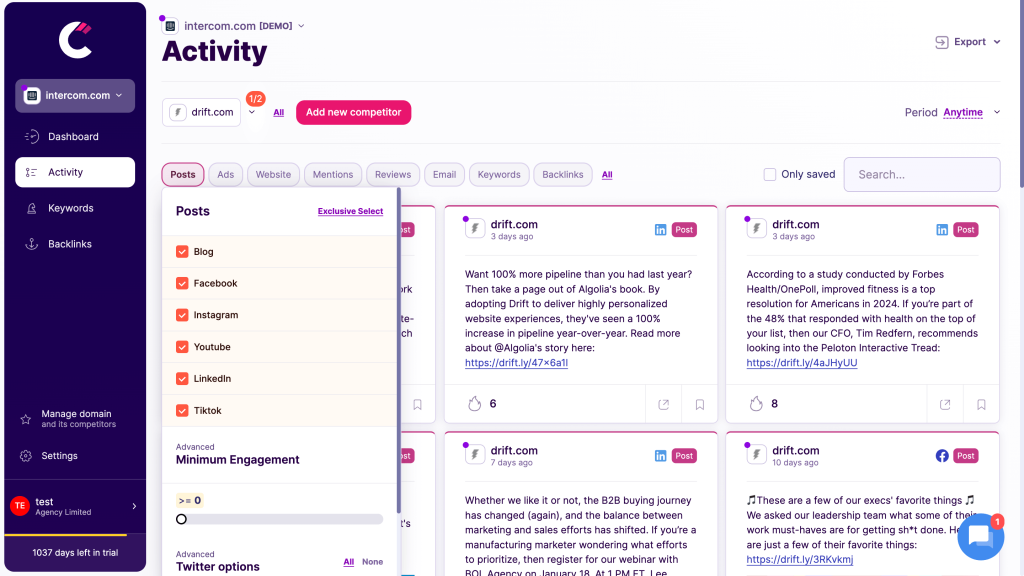
Competitive Analysis
Overall, PPC spying is about gathering and analyzing a comprehensive set of data points to get a clear picture of your competitors’ PPC strategies. This analysis includes:
– Identifying the strengths and weaknesses of competitors’ campaigns.
– Spotting opportunities where competitors might be underperforming.
– Uncovering trends and patterns that you can exploit in your own campaigns.
Benefits Of Using PPC Spy Tools for Competitor Analysis
I’ve seen businesses double their PPC conversions just by analyzing what their competitors were already doing successfully. Instead of spending weeks testing different ad angles, they reverse-engineered winning campaigns and optimized from day one.
Here’s why PPC spy tools should be part of your arsenal:
Spying on Competitor's Best Keywords
Most advertisers burn money bidding on the wrong keywords. PPC spy tools show you which keywords are driving conversions for your competitors—so you can target high-ROI terms from the start.
How to use this data:
- Identify the top-performing keywords competitors rely on
- Find undiscovered keyword gaps they aren’t leveraging
- Track seasonal trends and adjust bids before they do
Instead of guessing, you bid smarter, rank higher, and convert better.
Improving Ad Copy and Creative
Ad copy is everything in PPC. A minor tweak in your headline or CTA can mean the difference between a 2% and 10% CTR.
With PPC spy tools, you see the exact messaging competitors are using—which means you know:
✔ What headlines grab attention
✔ What CTAs drive the most conversions
✔ What ad styles and visuals actually work
Instead of testing blindly, you start with proven ad angles and make them even better.
Optimizing Budget Allocation
Most advertisers either underspend on high-value campaigns or waste money on low-performing ones. PPC spy tools break down how competitors allocate their budget—so you can adjust yours strategically.
How this helps:
- Spot which campaigns competitors prioritize
- See where they’re scaling up or cutting back
- Adjust your spending to dominate high-value ad placements
If a competitor is outbidding you on critical terms, you’ll know before your leads dry up.
Enhancing Landing Page Strategies
Clicks don’t mean anything if your landing page doesn’t convert. The best PPC advertisers aren’t just running ads—they’re sending traffic to pages designed to win customers.
PPC spy tools let you see the landing pages competitors are using, so you can:
- Identify which design elements drive conversions
- Optimize CTAs, layout, and copy for higher engagement
- A/B test smarter by starting with proven concepts
If their landing page outperforms yours, it’s time to reverse-engineer why and fix
Gaining a Competitive Edge
PPC isn’t about who spends the most—it’s about who spends the smartest. The brands that dominate aren’t necessarily the ones with the biggest budgets but the ones who study their competitors, adapt faster, and execute better.
PPC spy tools give you a real-time advantage by exposing:
- What’s working for your competitors so you don’t waste time on ineffective tactics
- Where market trends are shifting so you can adjust before others catch on
- How to refine and optimize your campaigns based on proven strategies
This isn’t just about copying competitors. It’s about outperforming them. When you leverage data-driven insights, you stay ahead instead of playing catch-up.
The Best PPC Spy Tools to Use in 2025
Choosing a PPC spy tool isn’t about grabbing the first one you come across. If you’re serious about outbidding competitors and maximizing your ad spend, you need a tool that gives you real insights—not just vanity metrics. Over the years, I’ve tested multiple PPC spy tools, and I can tell you firsthand: some are absolute game-changers, while others are just overpriced distractions.
Here’s a breakdown of the top PPC spy tools in 2025, based on what actually works.
Best PPC Spy Tools for Keyword Discovery
Competitors App
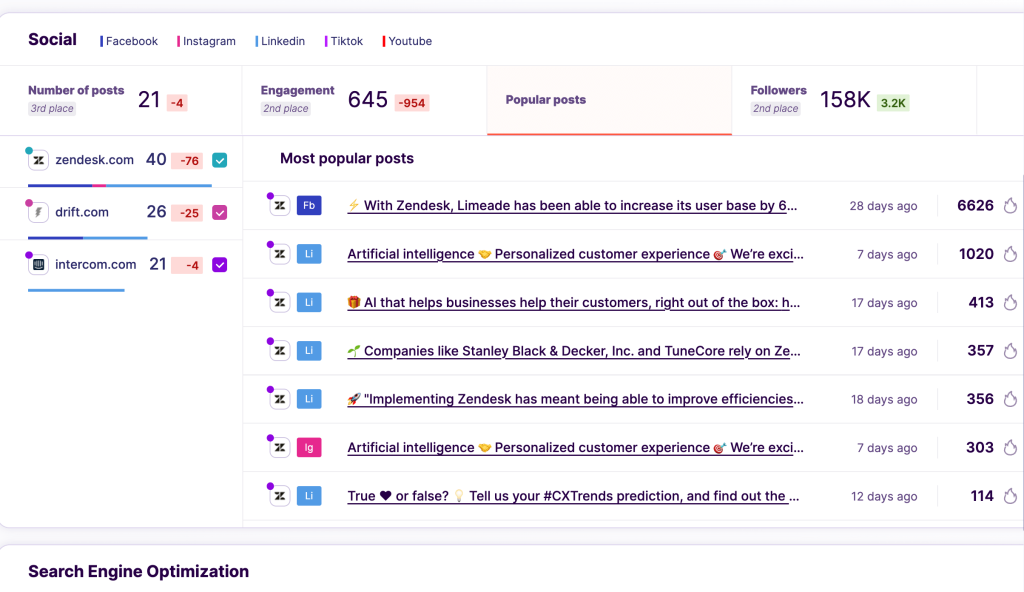
Why I Use It: Competitors App isn’t just about tracking PPC keywords—it gives you a full competitive snapshot across SEO, paid ads, and landing pages. I use it to:
- See which keywords drive traffic for my competitors.
- Monitor shifts in their ad strategy—when they increase bids, change targeting, or introduce new copy.
- Get alerts when a competitor tweaks their Google Ads campaigns.
Biggest Benefit: Automated tracking and alerts—I don’t have to manually check every competitor every day.
SEMrush
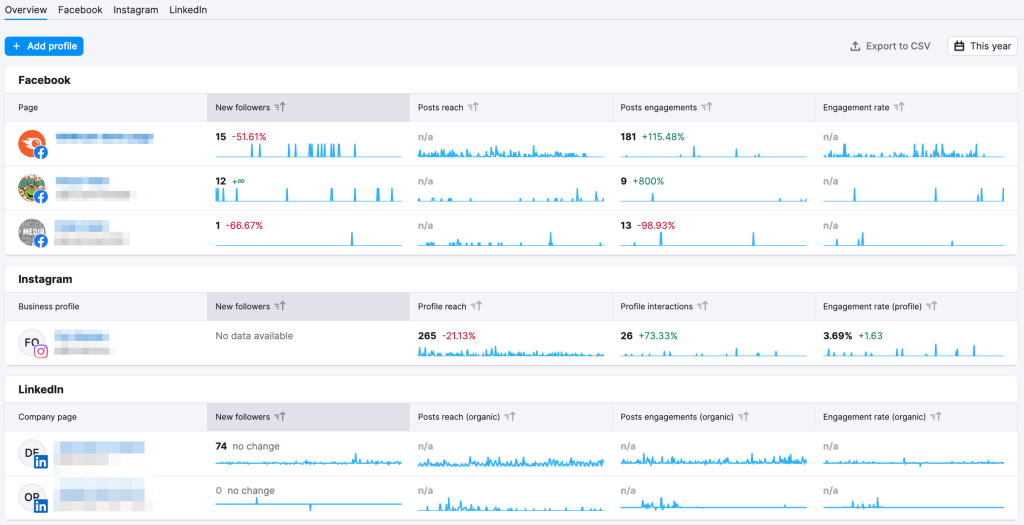
Why It’s Powerful: SEMrush is a powerhouse for keyword research, but what makes it great for PPC spying is its Google Ads insights. With SEMrush, I can:
- Find every keyword my competitors bid on across Search, Shopping, and Display.
- See the exact ads they’re running, including historical data on performance.
- Analyze keyword costs to avoid overspending on high-competition terms.
Best For: Marketers who want a deep PPC + SEO strategy in one place.
SpyFu
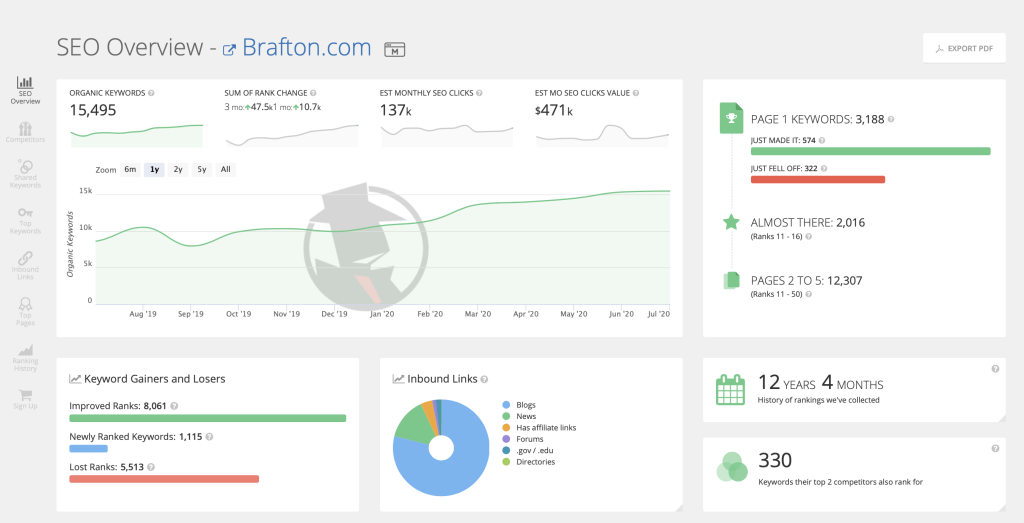
What Makes It Stand Out: SpyFu gives you historical PPC data, meaning you can see which keywords have been profitable for competitors over time. This is gold if you want to:
- Avoid bidding on untested keywords—only target the ones with proven ROI.
- Reverse-engineer ad spend trends—see if competitors are scaling or cutting back.
- Identify gaps in their strategy that you can exploit.
Where It Shines: Long-term keyword tracking and ad performance history.
Best PPC Spy Tools for Google Search Ads
Competitors App

Why I Rely on It: Competitors App is one of the best all-in-one PPC spy tools for tracking Google Search Ads. I use it to:
- Monitor my competitors’ keyword bids in real-time.
- Analyze changes in ad copy and calls-to-action to see what’s working.
- Track performance shifts to know when they scale up or pull back.
Biggest Win: It automates competitive tracking, so I don’t waste time manually researching competitor ads.
iSpionage

What It’s Best At: iSpionage breaks down competitor Google Ads campaigns in a way that’s simple but incredibly useful. The landing page insights alone make it worth it. Here’s what I love:
- See which landing pages convert best—so you can improve yours.
- Spy on ad variations to understand which copy is driving the most clicks.
- Track conversion-focused keywords to prioritize high-intent traffic.
Pro Tip: If you’re struggling with low-converting PPC campaigns, this tool will show you exactly what needs fixing.
Adbeat

Why It’s a Must-Have: Adbeat goes beyond keywords and ads—it dives into media buying strategies, showing where competitors are actually spending. I use it to:
- Uncover ad spend allocation—which platforms competitors are prioritizing.
- See which publishers they’re using for display ads and retargeting.
- Analyze ad formats and placements to optimize my own buying strategy.
Best For: Serious advertisers who want an edge in media buying, beyond Google Search.
Best PPC Spy Tools for Google Ads Display Network
Competitors App

Why I Use It: Competitors App isn’t just about tracking PPC campaigns—it’s a full-scale competitive intelligence tool that lets you spy on display ads across multiple networks, not just Google. I use it to:
- See which display creatives my competitors are running.
- Track ad placements and find the best-performing sites.
- Monitor ad frequency and engagement trends.
Biggest Benefit: Side-by-side ad comparisons let you quickly see which designs, CTAs, and formats are performing best. If a competitor suddenly pivots their ad creative, I know about it instantly.
Perfect for marketers who want a complete view of their competitors’ display strategies—beyond just Google Ads.
Adthena

What Makes It Stand Out: Adthena is laser-focused on competitive intelligence for Google Display Network ads, giving you:
- Ad placement insights—where competitors are running display ads.
- Creative performance tracking—which visuals, headlines, and messaging are converting.
- Budget allocation data—how much competitors are investing in display ads.
Best Use Case: If you’re heavily invested in GDN and need deep ad spend insights, Adthena is a must-have. It shows how competitors distribute their budgets, helping you adjust your bidding strategy to stay ahead.
Best Social Media PPC Spy Tools
Competitors App

This is my go-to tool for tracking social media PPC ads across platforms like Facebook, Instagram, LinkedIn, and TikTok. It doesn’t just show you ads—it gives you real competitive insights so you can:
- See every ad your competitors are running (images, videos, and copy).
- Analyze engagement metrics to spot winning creatives.
- Track audience targeting strategies and ad frequency.
Best Feature: The ad timeline view. You can see how long an ad has been running—because if a competitor keeps an ad live, it means it’s converting.
If you’re serious about outperforming competitors on paid social, this tool is a must.
Sprout Social
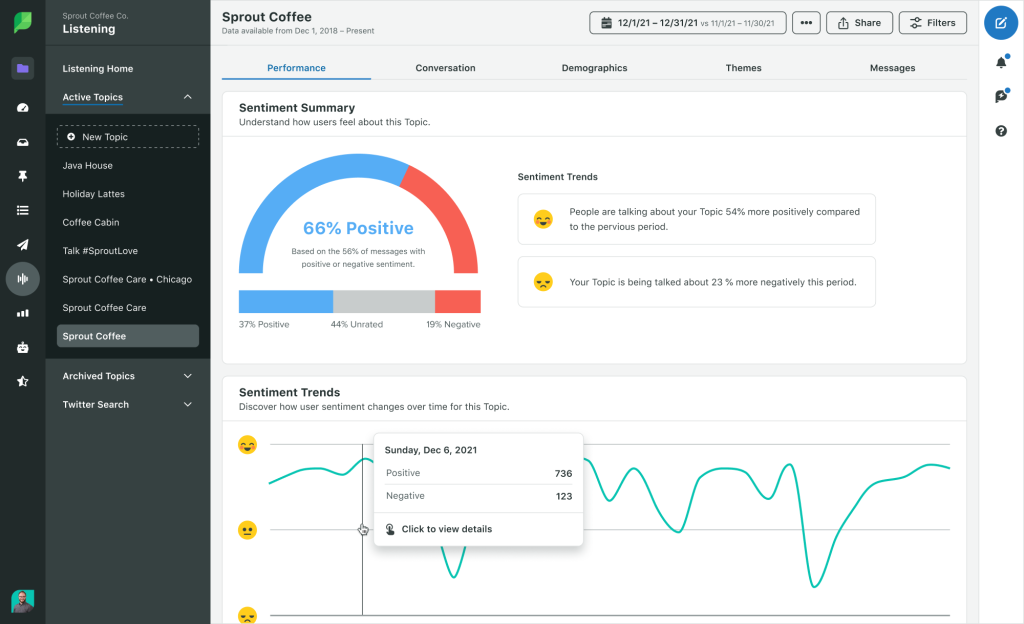
Sprout Social is more than just an ad spy tool—it’s a full social media analytics platform that helps you monitor engagement trends and competitor performance.
- Breaks down engagement rates to show which ads drive real interactions.
- Tracks competitor ad strategies so you know what’s working in your niche.
- Provides detailed audience insights to refine your own targeting.
Best Use Case: If you need a complete social media monitoring system that includes both organic and paid insights, Sprout Social delivers.
Mention

Want to track competitor ads AND social conversations in real-time? Mention gives you:
- Live monitoring of PPC ads across social platforms.
- Audience sentiment analysis to see how users react to competitor ads.
- Deep engagement reports so you can reverse-engineer top-performing campaigns.
Why I Like It: You don’t just see what ads competitors are running—you see how people respond to them. If an ad is getting tons of negative comments, you know what to avoid. If an ad is sparking engagement, you know what to test in your own campaigns.
Best PPC Landing Page Spy Tools
Competitors App

Competitors App is a game-changer. It tracks competitors’ landing pages and analyzes changes to give you the upper hand. I use it to understand which design elements, content strategies, and conversion tactics my competitors are using.
- Understand their layout—What works? What doesn’t?
- See their call-to-action buttons, images, and content placement—All the things I used to overlook.
- Identify new trends—What’s working today may not work tomorrow, and this tool helps you stay ahead of the curve.
By diving deep into this tool, I learned how to optimize my own landing pages to boost performance. If you’re serious about refining your PPC strategy, you need this in your toolbox.
Visualping

At some point, I realized I couldn’t just rely on periodic checks. I needed real-time monitoring. That’s when I came across Visualping.
- Instant alerts on any landing page changes from competitors.
- Easy interface that lets me customize exactly what I want to monitor.
I remember setting it up to track competitor landing pages and getting instant notifications the moment a competitor changed their copy or design. That’s when I could adapt my strategy quickly to stay competitive. You can’t afford to be reactive anymore; this tool gives you the power to be proactive.
Monitoro

Monitoro stepped in when I needed a more detailed, comparative analysis. This tool goes beyond tracking one page; it helps me compare landing page changes across competitors to see trends.
- Track content updates—What new value propositions are they adding?
- Measure design alterations—Is their new layout improving engagement?
- Analyze the impact on conversion rates—Understand what’s working and what’s not.
I’ve used Monitoro to refine my own landing pages based on competitor successes and failures. It’s like having an extra set of eyes on your competitors’ campaigns—keeping you one step ahead.
Best Free PPC Spy Tools
Competitors App

Don’t sleep on the free version of Competitors App. It gives you access to basic keyword tracking, ad copy analysis, and landing page insights.
- It’s a great starting point for small businesses or anyone looking to get their feet wet without a huge investment.
- The free version still helps you identify key areas for improvement and spot competitor trends early.
I started using the free version when I was building my first campaign and quickly realized that even the basics can unlock huge wins.
Ubersuggest

When I first stumbled across Ubersuggest, I didn’t realize how powerful it would be. The free keyword tracking and competitor analysis it offers are solid for anyone in PPC or SEO.
- Track competitor keywords—Which keywords are they ranking for?
- See their content strategy—What topics are driving traffic and conversions?
I use Ubersuggest regularly to fine-tune my keyword strategy and spot competitor tactics in real-time. For a free tool, it’s an underrated gem that’ll help you get more out of your PPC budget.
Google Ads Transparency Center

One of my favorite free tools is the Google Ads Transparency Center.
- You get to peek behind the curtain and see active ads, budget allocations, and how much your competitors are spending.
- Refine your budget—Use this data to match or beat your competitors’ bids.
I’ve used this tool countless times to adjust my ad spend and optimize my strategy. It gives you real insights into where your competitors are investing and whether their strategies align with your business goals.
Additional PPC Spy Tools
Serpstat

If you’re serious about keyword and PPC analysis, Serpstat is one of the most comprehensive tools out there. It gives you in-depth insights into competitors’ keywords, ad copy, and their overall strategy.
- Keyword research—Discover which terms they rank for.
- Rank tracking—See how competitors perform across search engines.
I use Serpstat to identify new growth opportunities and adjust my campaigns for maximum impact.
Buzzmo
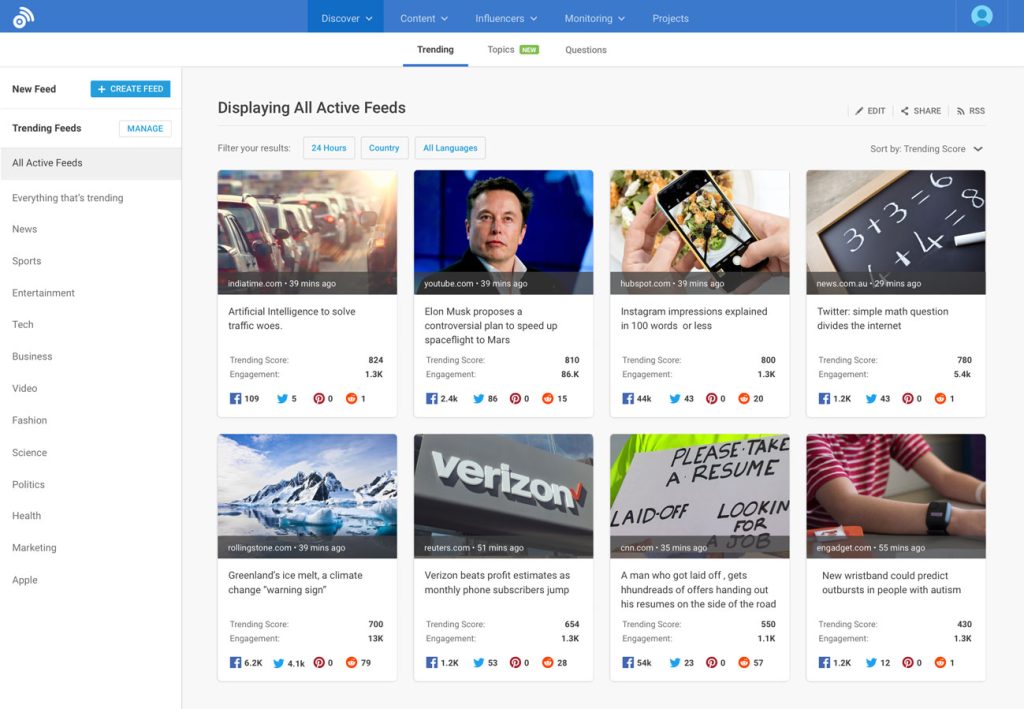
Buzzmo was one of the first tools I used to combine content marketing with PPC strategies. It helped me track which ads and content were driving the most engagement for my competitors.
- Track top-performing content—Discover trending topics, ads, and more.
- Understand engagement metrics—What’s working in your competitors’ content?
Buzzmo is perfect if you’re looking to integrate your content marketing with PPC to enhance overall campaign performance. It shows you where your competitors are getting the most ROI from their content and ads.
How to Find Your PPC Competitors (Without Wasting Time on the Wrong Ones)
When I first started running PPC campaigns, I assumed my biggest competitors were the obvious ones—the brands selling the same products. Big mistake.
I wasted months tracking the wrong companies, only to realize that real PPC competitors aren’t always who you think they are. They’re the businesses outbidding you on keywords, ranking above you in paid search, and stealing your traffic before customers even see your offer.
Here’s how to properly identify your PPC competitors and avoid the common mistakes that cost businesses thousands in wasted ad spend.
1. Identify Your Target Keywords
Your competitors aren’t just the businesses in your niche—they’re the ones ranking for the same keywords.
- Start with primary keywords related to your products/services.
- Expand to secondary keywords—terms potential customers use when researching their options.
- Think beyond just high-intent keywords. Even competitors ranking for top-of-funnel searches could be stealing your leads.
I learned this lesson when I was bidding on high-intent transactional keywords but completely ignoring competitors ranking for informational searches. They were grabbing leads early, warming them up with retargeting, and closing sales before my ads even had a chance.
2. Search Google & Bing Like Your Customers Would
Don’t rely on automated reports—do some manual research.
- Google your target keywords and check who’s running ads at the top of the SERPs.
- Look for businesses that consistently appear in paid search results.
- Click on a few ads and note where they take you—a product page, a lead magnet, or a direct sales page?
Pro tip: Clear your cache or use an incognito window to get an unbiased look at search results.
3. Analyze the Top Advertisers
Some advertisers dip in and out of PPC, while others dominate. Your real competitors are the ones showing up consistently, meaning they’re:
- Investing heavily in PPC
- Optimizing their ads over time (which means they’re likely profitable)
- Targeting similar customers
When I started tracking who kept showing up in paid search, I realized that some competitors I had ignored were quietly winning market share.
4. Use PPC Spy Tools for Deep Data
Here’s where you go beyond the surface. PPC spy tools let you see exactly what’s working for your competitors.
Best tools for competitive PPC insights:
- Competitors App – Tracks keywords, ad creatives, and landing pages.
- SEMrush – Reveals competitor ad spend, keyword bids, and PPC performance trends.
- SpyFu – Provides historical PPC data, so you can see which keywords your competitors have relied on for years.
- iSpionage – Gives insights into ad copy, conversion funnels, and budget allocation.
These tools cut out the guesswork and help you make smarter PPC decisions.
5. Reverse Engineer Their Ad Copy & Offers
One thing I learned fast: Your competitors have already tested what works.
Instead of reinventing the wheel, analyze their ad copy:
- What headlines are they using?
- What pain points are they addressing?
- Are they using time-sensitive offers or discounts?
I once tested a generic CTA (“Sign up today”) against a high-intent competitor-inspired CTA (“Try risk-free for 30 days”)—the difference in click-through rates was night and day.
6. Examine Competitors’ Landing Pages
Clicks mean nothing if the landing page doesn’t convert.
- Study how your competitors structure their pages.
- Look at headlines, CTA placements, and overall design.
- Identify which conversion tactics they use—social proof, urgency, guarantees?
I remember testing a competitor-inspired landing page layout with a stronger value proposition above the fold. Bounce rates dropped, conversions jumped.
7. Monitor Competitor PPC Activity Over Time
Your competitors aren’t static—they adjust bids, test new creatives, and optimize campaigns constantly. If you’re only checking once, you’re already behind.
Set up ongoing tracking:
- Use Competitors App to track competitor PPC updates automatically.
- Get Google Ads Transparency Center insights on their active campaigns.
- Use Visualping or Monitoro to track landing page changes.
One of the biggest PPC mistakes? Only checking competitors when launching a new campaign. You need consistent monitoring to stay ahead, not play catch-up.
8. Generate Competitor Reports & Adjust Your Strategy
Raw data means nothing without action.
- Create reports summarizing key takeaways—top keywords, ad copy trends, landing page elements, and estimated spend.
- Look for patterns—what are competitors consistently doing that’s driving results?
- Adjust your own campaigns based on real competitive insights, not gut feelings.
9. Watch for New Players in Your Space
New competitors pop up all the time, and some will scale fast. If you’re not paying attention, you’ll get blindsided.
- Track new advertisers bidding on your keywords.
- Watch for emerging startups disrupting your industry.
- Stay ahead of rising PPC trends before they become mainstream.
I once ignored a small startup that started bidding on my top keywords. Six months later, they were dominating the niche. If I had tracked them earlier, I could’ve adjusted before they took market share.
10. Look Beyond Google – Spy on Social PPC Too
Google Ads isn’t the only battleground. Your competitors are likely running Facebook, Instagram, LinkedIn, and TikTok ads too.
- Use Meta Ad Library to see their active social ads.
- Track LinkedIn Ads for high-ticket B2B competitors.
- Use AdEspresso or SocialPeta for deeper social ad insights.
Social PPC is where many competitors outmaneuver search-focused brands. If you ignore it, you’re missing half the picture.
How to Effectively Use Competitor Data
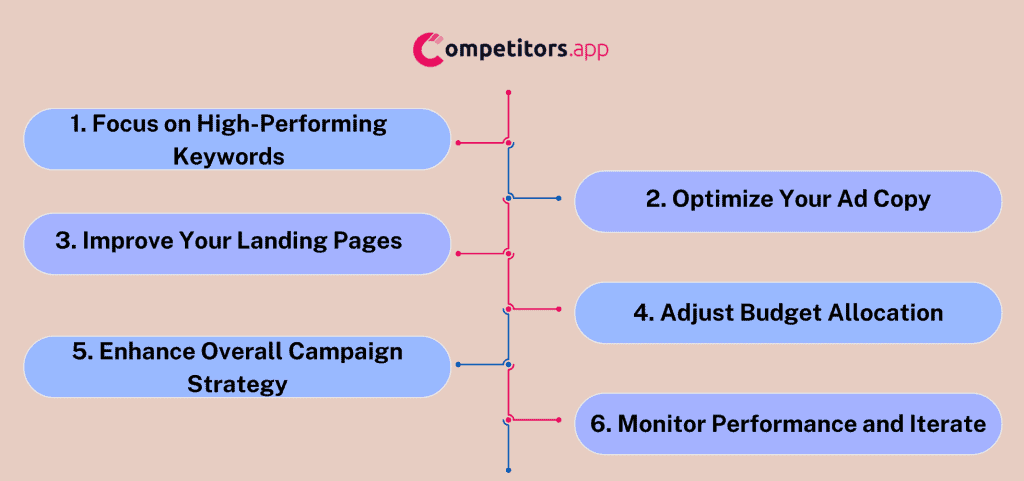
Once you’ve gathered competitor data, the next step is to leverage this information to refine and enhance your own PPC campaigns. Here’s a detailed guide on how to use competitor data effectively:
1. Focus on High-Performing Keywords
1. Focus on High-Performing Keywords
Find the Keywords That Drive Conversions
Not all keywords are worth chasing. Look at what’s actually driving conversions for your competitors, not just what they’re bidding on.
- Use tools like Competitors App, SEMrush, or SpyFu to uncover high-performing keywords.
- Identify which keywords consistently appear in competitor ads—these are the ones paying off.
- Focus on transactional keywords (not just high-traffic ones) that bring in actual customers.
I once spent weeks bidding on high-volume keywords, only to realize my competitors were making more money from niche, lower-volume searches. Adjusting to more targeted, intent-driven keywords instantly boosted my ROI.
Integrate Them (But Be Smart About It)
- Use exact match and phrase match to capture high-intent traffic.
- Test broad match with smart bidding to find hidden opportunities.
- Bid strategically—don’t just throw money at the highest CPC terms.
Go After What They’re Missing
- Look for gaps—keywords competitors aren’t targeting that still have strong search intent.
- Find long-tail keywords—lower competition, lower cost, but often higher conversion rates.
2. Write Better Ad Copy (Without Copying Your Competitors)
Analyze What Works in Their Ads
Your competitors have already tested what works—learn from them instead of guessing.
- Look at ad headlines, descriptions, and CTAs that get the most clicks.
- Identify common themes in their messaging. Are they focusing on price? Speed? Features?
- Track which offers they push the most—discounts, free trials, or guarantees?
I once ran two ad variations—one inspired by a competitor’s winning formula, another completely unique. The competitor-inspired version outperformed by 30%, but a simple tweak to the CTA boosted conversions even further.
Make Your Ads Stand Out
- Highlight your unique selling points (USPs)—don’t just copy what they say.
- Use stronger CTAs—if they say “Get Started,” you say “Claim Your Free Trial Today.”
- Test emotional vs. logical appeals—sometimes a small shift in messaging doubles conversion rates.
3. Optimize Your Landing Pages Like a Pro
What Are Their Landing Pages Doing Right?
Your competitor’s ad got the click—but why did the customer convert?
- Study their landing page layout, headlines, CTA placements, and overall flow.
- Look at trust signals (testimonials, social proof, security badges).
- Track changes over time—if they tweak something, it’s for a reason.
Apply What Works & Improve What Doesn’t
- Make your CTA clear—don’t make users hunt for it.
- Remove friction—simplify forms, cut distractions, and focus on one goal per page.
- Match ad copy to landing page messaging—confusion kills conversions.
I once redesigned a landing page based on competitor insights—faster load time, clearer CTA, and stronger trust signals. The result? Conversion rates jumped by 45% overnight.
4. Adjust Budget Allocation (Compete Smarter, Not Harder)
Where Are They Spending?
If a competitor is outbidding you on high-value keywords, they’re doing it for a reason.
- Use PPC spy tools to analyze their ad spend trends.
- Identify which campaigns they prioritize—search, display, remarketing, or video ads?
- Check where they’re scaling up or cutting back—this tells you what’s working for them.
Outsmart, Don’t Outspend
- Bid aggressively where it makes sense (high-converting keywords, strong intent).
- Find underpriced opportunities—keywords or placements your competitors are ignoring.
- Use dayparting & geo-targeting—run ads when and where your competitors aren’t.
I once noticed a competitor dominating daytime searches but ignoring evening traffic. Running ads during off-hours gave me cheaper clicks and less competition, bringing in leads they missed.
5. Spot Gaps & Capitalize on Missed Opportunities
Your competitors aren’t perfect. Find their weak spots and attack.
- Are they missing key keywords that customers search for?
- Are their ad creatives repetitive? Test fresh angles they haven’t tried.
- Are their landing pages slow or confusing? Make yours smoother and faster.
A competitor once ignored video ads, assuming their audience wasn’t interested. We tested short-form video PPC ads and saw a 67% higher engagement rate—stealing their audience before they could react.
6. Monitor & Adapt (Stay One Step Ahead)
PPC isn’t set-and-forget. Competitors change strategies constantly—if you’re not tracking, you’re falling behind.
- Use Competitors App to track ad changes in real-time.
- Set alerts for new keywords they start bidding on.
- Monitor ad copy updates—if they change it, they’re optimizing for something.
I once saw a competitor swap out their CTA wording, and within a week, they started getting more traction. I tested a similar tweak—CTR jumped by 22%.
7. Stay Agile & Keep Testing
The best PPC advertisers never stop testing.
- Run A/B tests regularly—ad copy, landing pages, bidding strategies.
- Track what works & refine—don’t get stuck with the same strategy.
Adjust based on competitor data—but always make it your own.
Best Practices for PPC Spying
1. Track Competitor PPC Campaigns Regularly
Stay on Top of Changes
A one-time competitor analysis won’t cut it. PPC strategies shift constantly, and if you’re not tracking updates, you’re missing opportunities.
- Monitor competitors’ campaigns weekly or bi-weekly—especially in fast-moving industries.
- Identify new keywords, ad copy changes, and shifts in budget allocation.
- Track how often they adjust their messaging—frequent changes signal they’re optimizing.
I once saw a competitor suddenly double down on a keyword we ignored. A week later, they outranked us on Google Ads. We had to play catch-up. If I had been tracking them properly, we could have countered immediately.
Set Up Alerts & Notifications
- Use tools like Competitors App, SEMrush, or SpyFu to get real-time alerts when a competitor launches a new ad.
- Keep an eye on seasonal shifts—competitors ramp up during major shopping periods or industry events.
- Watch for sudden budget spikes—it usually means they found a winning strategy worth scaling.
2. Use Multiple PPC Spy Tools (Don’t Rely on Just One)
Every PPC spy tool has blind spots. If you’re only using one, you’re missing half the picture.
Diversify Your Toolkit
- SEMrush & SpyFu – Best for Google Ads keyword insights and historical PPC data.
- Adbeat & AdSpy – Ideal for tracking display and native ads.
- Competitors App – Great for monitoring overall ad activity across multiple platforms.
- Facebook Ad Library – Essential for checking social media PPC campaigns.
Cross-Check Data
Some tools estimate ad spend, but their numbers can be off. If SEMrush says a competitor spends $50K/month and Adbeat says $80K/month, dig deeper. The real number is probably somewhere in between.
3. Test & Optimize Based on Competitor Insights
Run A/B Tests Inspired by Competitor Ads
Don’t just copy competitor ads—test what works and improve it.
- If they emphasize “Free Shipping,” test “Fast, Free 2-Day Shipping.”
- If they use “Limited-Time Discount,” try “Exclusive VIP Pricing.”
- Tweak CTA placement—sometimes a small button adjustment can boost conversions.
Apply What You Learn, But Stay Unique
- Use competitor data to find patterns in ad copy, landing pages, and offers.
- Refine your messaging to highlight what they aren’t saying.
- If they rely on a discount strategy, try positioning your product as premium instead.
A competitor once slashed prices aggressively. Instead of joining the price war, I positioned our brand as higher quality with better customer support. The result? More conversions at a higher profit margin.
4. Reverse-Engineer Competitors’ Landing Pages
Your competitor’s ad got the click—but did it convert?
Dissect Their Landing Pages
- Study headline structure, CTAs, and page layout.
- Check if they use testimonials, urgency tactics, or video content.
- Test similar UX elements to improve your own conversion rates.
I once noticed a competitor using a countdown timer on their landing page. We tested it—and conversions jumped 22% overnight.
Monitor Landing Page Changes Over Time
- Use Visualping or Competitors App to track updates.
- If they change pricing or CTA wording, test a similar shift.
- If they suddenly remove a feature highlight, it’s probably not converting well—avoid making the same mistake.
5. Spy on Competitor Ad Schedules & Timing
Find Their Peak Performance Hours
- Use PPC spy tools to track when competitors run ads (day of the week, time of day).
- Adjust your ad schedules to compete at peak times—or dominate off-peak hours.
I noticed a competitor stopped running ads late at night. We ran midnight campaigns and saw a 40% lower CPC—winning customers while they slept.
Analyze Seasonal Spending Trends
- Watch when they increase budgets—Black Friday, holiday sales, industry events.
- Launch your campaigns early so you don’t get priced out of the auction.
6. Use Competitor Budget Insights to Adjust Your Bids
Where Are They Spending?
- Identify high-priority keywords where they’re outbidding you.
- Find gaps—keywords they aren’t fully investing in that still convert well.
A competitor was spending big on high-competition keywords but ignored branded search. We dominated their brand keywords for a fraction of their ad spend.
Adjust Bidding Strategies
- Use manual bidding to control exact CPCs on high-value keywords.
- Leverage automated bidding where competitors overspend inefficiently.
- Test bid adjustments (device, location, audience segments) to find profit sweet spots.
7. Keep Competitors From Spying on You
They’re watching your PPC campaigns too. Here’s how to make it harder for them:
Block Competitor Clicks
- Exclude their IP addresses so they can’t see your ads.
- Use geotargeting to hide ads from their office locations.
Track Their Tracking
- If you notice a sudden surge in clicks from their region, they’re likely spying on your ads.
- Use ClickCease or PPC Protect to block suspicious competitor activity.
8. Stay Ethical & Compliant
PPC spying isn’t about stealing—it’s about learning and adapting.
Follow Platform Rules
- Use legal tools—don’t scrape data or hack systems.
- Stay within Google & Facebook ad policies to avoid penalties.
Analyze, Don’t Copy
If you just copy a competitor’s strategy, you’ll always be second place.
- Use their insights as a foundation, but make it better.
- Spot their weaknesses and exploit them instead of following blindly.
How to Prevent Your PPC Competitors From Spying On You
To protect your PPC campaigns from competitors’ spying, consider these effective tactics:
Exclude Competitor Office Locations
Use geotargeting to exclude locations where your competitors are based. This prevents them from easily seeing your ads. By blocking specific regions, especially where competitor headquarters are located, you limit their ability to directly monitor your campaigns and gather insights.
Exclude Competitor IP Addresses
Identify your competitors’ IP addresses and exclude them from accessing your ads. This is done by adding their IP ranges to the exclusion list in your ad settings. By blocking these IP addresses, you prevent competitors from viewing your ads and landing pages, making it harder for them to analyze your strategies.
Conclusion & Final Thoughts about PPC Spying
PPC spying is an essential practice for staying competitive in the digital advertising space. By leveraging the right tools and strategies, you can gain valuable insights into your competitors’ campaigns and enhance your own. Stay proactive, continuously optimize, and you’ll see significant improvements in your PPC performance.
FAQS
1. What is PPC monitoring?
PPC monitoring involves tracking the performance of your PPC campaigns to ensure they meet your goals and deliver a positive ROI.
2. How is PPC tracked?
PPC is tracked using analytics tools that measure clicks, conversions, and other key metrics. Platforms like Google Ads and Facebook Ads provide detailed tracking and reporting features.
3. Does PPC actually work?
Yes, PPC can be highly effective when managed correctly. It allows businesses to reach targeted audiences, drive traffic, and generate conversions.
4. What is the best PPC Spy tool?
The best PPC spy tool depends on your specific needs. Competitors.app, SEMrush and SpyFu are great for keyword research, while AdEspresso is excellent for social media ads.
5. What is the best free PPC Spy tool?
Competitors.app is a popular free option that provides basic competitor and keyword analysis features.
